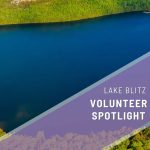Wildfire Suppression in Rural BC fuelled by proactive Water Mapping
The water monitoring and mapping informing this initiative is part of the Columbia Basin Water Monitoring Framework, which takes place in the unceded traditional territories of the Ktunaxa, Lheidli T’enneh, Secwepemc, Sinixt and Syilx Nations who have stewarded these lands for generations
In mid-July, nearly 500 wildfires across Canada were ignited by lightning strikes. In the BC Interior mountains above the small rural community of Argenta, three lightning strikes set parched vegetation ablaze. The Argenta Creek wildfire was discovered the following day on July 18, burning through thick stands of lodgepole pine and spruce. The volunteer community fire brigade known as the Argenta Safety and Preparedness Society (ASAP) took immediate action by laying hoses, sourcing and transporting water, falling danger trees, and attacking the first fire alongside the BC Wildfire Service (BCWS).
One month prior, Living Lakes Canada had published a timely resource in collaboration with ASAP. Water Resources for Wildfire Suppression provides comprehensive digital maps identifying all available water sources in the Argenta and Johnsons Landing region of the West Kootenays. It also charts high-pressure standpipes, ideal pump deployment sites in streams, locations of buildings and residences, and access routes.
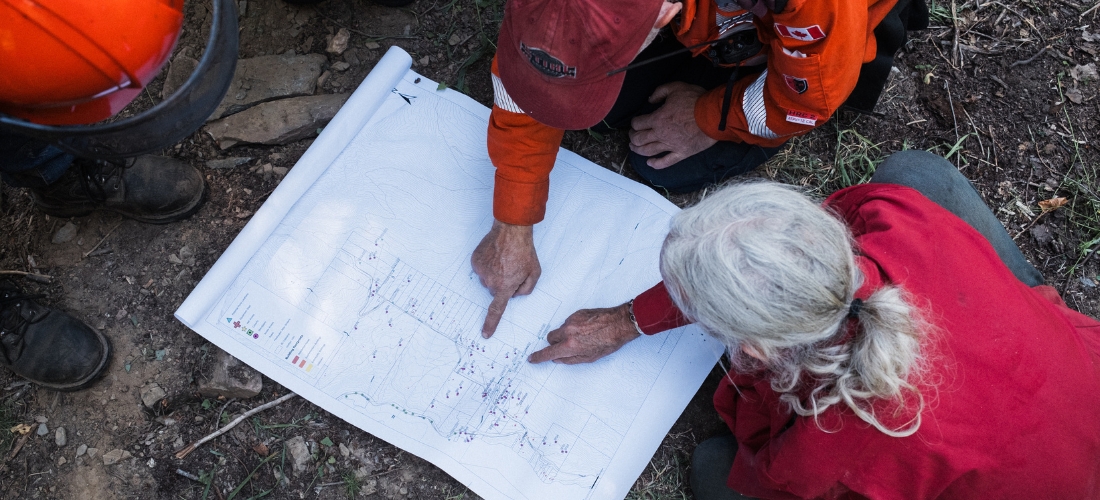
During its development, Living Lakes had liaised with the BCWS to ensure the resource was tailored to meet the specific needs of provincial firefighters, including integrating the maps into Avenza Maps — the app used by BCWS crews — for practical use in the field. The completed resource package, accessible through a password-protected webpage, was shared ahead of the wildfire season with senior BC Wildfire Service personnel and Southeast Fire Centre staff at the Kootenay Lake Fire Zone office as well as the local ASAP members, and met with a very positive response.
This meant that ASAP personnel were already familiar with the resource’s detailed information and maps before the onset of the Argenta Creek wildfire. Once the fire started, the volunteer crew was able to support BCWS efforts with this comprehensive local knowledge and fight the fire alongside them.
Water Resource Mapping for Fighting Wildfire
As the Argenta Creek wildfire blazed into the second day, winds caused two adjacent fires to spread and combine. BCWS air tankers and helicopter bucketing were unable to check the fire’s progress and flames continued to race down the steep slope towards the Argenta community. ASAP switched focus to setting up sprinklers on houses, wrapping porches and outbuildings with fire retardant sheeting, and doing last minute firesmarting.
As BCWS Structure Protection Units arrived from other parts of the province, they were impressed with the local response and the detailed maps that ASAP members were able to provide, both as large printed versions and as Avenza files to load onto their devices.
“When our team first shared the maps, both digital and large paper versions, with the on-site provincial crew, they were blown away,” said Rik Valentine, ASAP Crew Leader, instructor of basic wildfire and safety certifications, and co-author of the resource. “No one had ever seen anything like it.”

Easy access to local knowledge of water sources is a critical asset for firefighting crews, especially those arriving from outside the region or country. By compiling, digitizing and transforming local knowledge into interactive maps, the collaboration between ASAP and Living Lakes helped crews to quickly orient themselves and gain situational awareness at a critical time.
A combination of hot, dry conditions and a major wind event triggered the extreme behaviour of the Argenta Creek wildfire. Within a single day, the fire grew nearly 30-fold as multiple blazes merged into one. Most of the firefighting action was taking place directly above the community where no water was readily available. Water was being pumped from two water sources in the community, Argenta Creek and Carter Creek, indicated on the map.
“This resource combines local knowledge with Living Lakes Canada’s technical knowledge of water monitoring and mapping,” said Rik. “It played an important role between ASAP and the BC Wildfire Service to protect the community.”
For 20 years, Valentine has championed the local fire brigade. His deep-rooted knowledge of the region, as a lifelong local, was invaluable to this community-based collaboration. Prior to being able to access this resource, incoming fire crews would have been limited to regional maps that often lack accuracy and detail and, in some cases, plot stream channels hundreds of metres from where they actually are.
On-the-ground Impact of Water Monitoring and Mapping
Kootenay Watershed Science (KWS) started to monitor watersheds in the North Kootenay Lake region in 2012, and the monitoring continued once KWS joined Living Lakes Canada’s Columbia Basin Water Monitoring Framework (CBWMF). The CBWMF is a coordinated monitoring network that tracks how climate change and other impacts are affecting water supply for communities and ecosystems across the Canadian Columbia Basin region. The data collected is made freely accessible through the Columbia Basin Water Hub, an open-access database developed and facilitated by Living Lakes to inform strategies for adaptive watershed management and freshwater stewardship in the Columbia Basin.
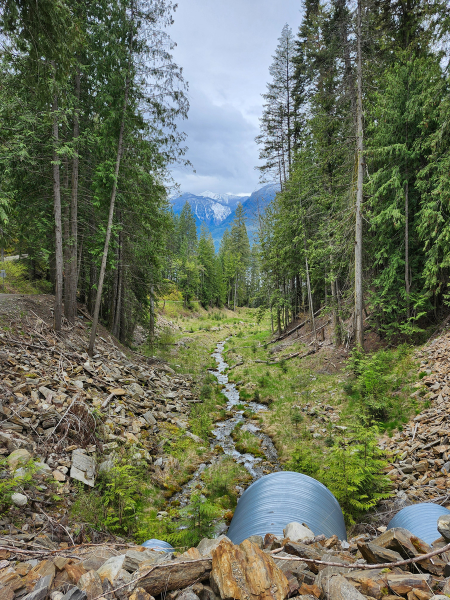
“We have a decade plus of water data at our fingertips. By partnering with Rik and ASAP, Living Lakes was able to collect and digitize the knowledge ASAP had gathered from many years of studying the landscape, and planning and practicing for wildfire suppression. By putting this all together, we’ve collaborated to create a practical, on-the-ground tool that has found an immediate and valuable application,” said Paul Saso, hydrologist with Living Lakes and co-author of the resource.
Rik, who envisioned and had begun researching a water mapping resource for the community, said, “Joining up with Living Lakes Canada’s expertise and capacity made it possible to complete the project and come out with a workable end product that has potential to serve as a model for other rural communities.”
Long-term water monitoring, like that conducted through the CBWMF, is key to understanding local hydrology and can directly impact wildfire suppression efforts.
Several small streams flow through Argenta and Johnsons Landing, providing essential water supplies for residents and firefighting. However, the region’s atypical hydrology poses a challenge. Streams frequently disappear into the ground, only to reappear further downstream due to the area’s permeable streambeds and karst geology, the result of soluble limestone formations that erode over time. Significant seeps — areas where groundwater naturally emerges at the surface — occur frequently across the landscape.
Water Resources for Wildfire Suppression identifies 29 natural stream sites that fire crews can access to quickly obtain the water needed for fire suppression. It provides site coordinates, descriptions and photos, access routes, and expected discharge rates per month (highs and lows for July, August, September). Discharge information was derived from the CBWMF’s ongoing monitoring on Kootenay Joe Creek and Gar Creek, historic data from an old Water Survey of Canada monitoring station on Argenta Creek, the BC Water Tool (an online platform for streamflow modeling), and direct site visits and spot measurements.
Standpipes, large-diameter water pipes capable of delivering high volumes of water, were also mapped. While some parts of the community are situated near the shores of Kootenay Lake, most residences are located at higher elevations. Pumping water from the lake to these homes would require hundreds of metres of hoses and multiple pumps, making it a time-consuming and resource-intensive task.
As a first line of defense, standpipes can support suppression through the sprinkler system or direct action on nearby fires. The resource maps 59 standpipe locations in Argenta, providing details on static pressure, diameter, and type of hose fitting required. While standpipes are a go-to resource for fire crews, they can be challenging for incoming teams to locate, often hidden in gardens, vegetation, or even underground.
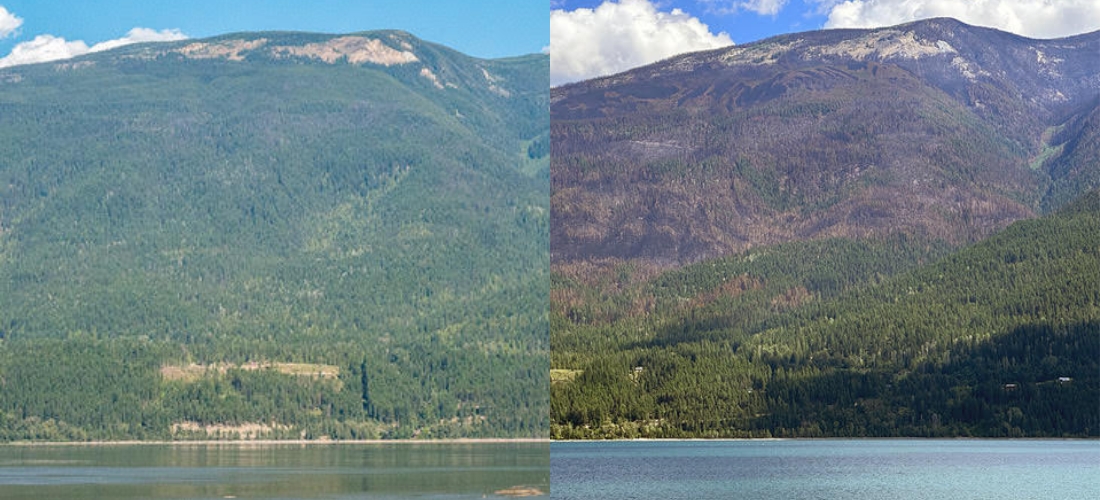
Effective Collaboration and Coordination Across Agencies
Rik shared feedback from a member of one of the Structural Protection Unit teams that ASAP had collaborated with to set up sprinkler systems and ember shields for protecting homes: “Having never experienced a community spread out in the woods that was entirely supplied by gravity-fed water from creeks and springs, they said the resource was so valuable that it saved them two days of investigating water sources.”
This saved time dramatically improved the speed of response efforts. The Argenta Creek wildfire burned perilously close to the community and triggered an evacuation order, but thanks to the collaborative efforts, only one small building was lost.
“The comprehensive maps in this resource have proven to be crucial tools for enhancing community resilience and wildfire suppression efforts, helping to protect property and save lives,” said John Cathro, professional forester and consultant, and co-author of the Regional District of Central Kootenay’s Community Wildfire Protection Plan.
According to a BC Wildfire Service statement, “Living Lakes Canada in collaboration with ASAP has gathered critical local knowledge about the Argenta and Johnsons Landing region well in advance of a potential wildfire emergency. Preparedness tools such as these bolster BC Wildfire Service’s coordination and partnerships with local resources and firefighting resources in their efforts to support response efforts in a community.”
This innovative partnership between a community organization and water stewardship non-profit facilitated the exchange of critical information across organizations, enhancing wildfire response and efficiencies. Joint efforts such as this are not just beneficial – they represent a necessary new paradigm for tackling growing climate challenges and breaking down silos to support climate adaptation.
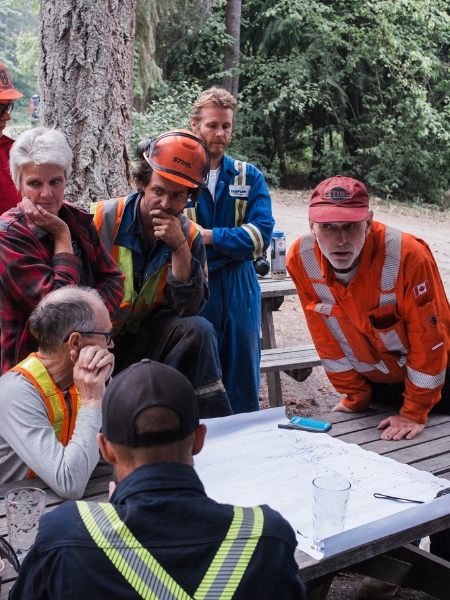
Looking Forward to Future Applications
As the impacts of out-of-control wildfires, heat waves, drought, low flows in rivers and streams, and receding glaciers compound year after year, the water security essential for both humans and ecosystems is increasingly threatened. Expanded water monitoring is essential to enable communities to adapt.
The Columbia Basin Water Monitoring Framework is filling critical water data gaps, with the long-term goal of expanding its work across the entire Columbia Basin. The current operational area of the CBWMF network covers 25,000 square kilometres with various station types, including hydrometric, groundwater wells, climate, high elevation, lake/wetland, snow surveys and biomonitoring. The comprehensive data gathered by the CBWMF could be used to inform similar fire-preparedness initiatives in other watersheds across the Basin region.
Water Resources for Wildfire Suppression also provides a tailored solution and a replicable model for other communities beyond the Basin. Serving as a prime example of an on-the-ground watershed security project, it can be adapted to address the local needs and priorities of different areas.
Investing in proactive climate adaptation projects can significantly reduce the exorbitant costs associated with climate disasters like wildfire damages, including home and infrastructure losses, insurance claims, and rehoming expenses. A 2022 report by the Canadian Climate Institute found that “every dollar invested in adapting to climate change, and protecting Canadians against climate disasters, can save as much as $15 in economy-wide future costs.”
“The collaboration in developing these resources has been integral to the BC Wildfire Service’s ability to fight the Argenta Creek wildfire. It is an incredible story that will surely change how the Province addresses emergencies in remote communities,” said Aimee Watson, Board Chair and Area D Director of the Regional District of Central Kootenay, and member of the Local Government Advisory Committee on Emergency and Disaster Management Act Regulations. “This is the new template for others to learn from.”
The full Watershed Bulletin is available as a flipbook and PDF.
The full Water Resources for Wildfire Suppression report is only available to firefighting professionals. View the publicly available version, which omits private information, in the flipbook below, expand the flipbook into a new tab, or view as a PDF.
CBWMF data is available to researchers, decision makers, and the public on the Columbia Basin Water Hub.




